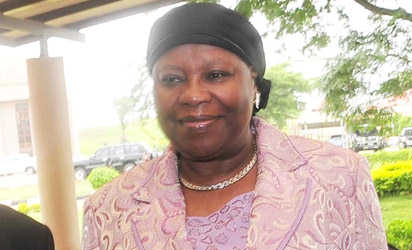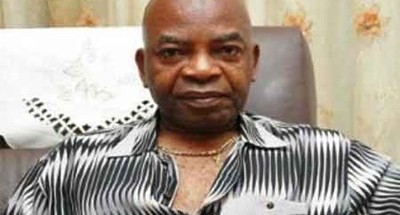Rot in Judiciary: CJN’s scorecard after one year
By Ikechukwu Nnochiri, Abuja
July 16, marked exactly one year when Justice Aloma Mariam Mukhtar, assumed office as the first female Chief Justice of Nigeria, CJN, having succeeded Justice Dahiru Musdapher who bowed out of the judiciary on July 15, 2012.
Remarkably, since 1963 when the Federal Republic of Nigeria was proclaimed and Dr Nnamdi Azikiwe became its first President, no woman has ever headed the judiciary.
Statutorily, the CJN heads the Supreme Court and the National Judicial Council, NJC, a position that has been the exclusive preserve of men since the country gained independence.
As it stands today, Nigeria has produced thirteen successive CJNs, with the first being Justice Adetokunbo Ademola, who held sway at the apex court bench from 1958 to 1972.
Hitherto to her ascension to the referred office, the integrity of the judiciary had nosedived to an extent that corruption was gradually becoming a lexicon customary to the justice sector.
The situation deteriorated to the stage that an ex-CJN and a sitting President of the court of Appeal, publicly poked each other over alleged plan to subvert justice in a gubernatorial dispute involving Sokoto State.
Chief Justice of Nigeria, CJN, Justice Aloma Mariam Muktar
Consequently, while answering questions from the Nigerian Senate prior to her confirmation on July 11, 2012, Justice Muthtar, admitted the presence of bad eggs at the top echelon of the judicial arm of government, even as she vowed to fight and expose such persons before her exit from office next year.
She said: “As at now, it is very bad and I am saddened by it. I will try. I don’t want to sound like a broken record. I will try to make sure that the confidence reposed in the Judiciary, as it was before, is returned. I will try to ensure that the bad eggs that are there are flushed out. That there will be a cleansing by the National Judicial Council (NJC) based on petitions. It is sad that the ordinary man on the street thinks and feels that he cannot get justice. This is because of the situation we find ourselves. I will ensure that this perception changes.”
Thus, few days after she assumed duties, the CJN, went through 337 petitions filed against judicial officers before NJC.
Lamenting that the integrity of the judiciary was fast eroding, the CJN, disclosed that she “inherited 139 petitions, 106 of which were vexatious or baseless, only 33 of the petitions were considered worthy of attention.”
According to her: “After my assumption of office as Chief Justice, 198 fresh petitions were filed, of this number, 150 were found to be frivolous, 15 are awaiting responses from Judges and only 21 were slated for consideration.”
To add bite to her threat to weed out corrupt elements from the bench, Justice Mukhtar, on February 28, this year , sacked two justices, Charles Archibong of the Federal High Court Lagos and T.D. Naron of High Court of Justice, Plateau State.
Acting alongside the NJC, she further set up a ‘Fact Finding’ Committee to investigate allegations of corruption against Justice Abubakar Talba of FCT High Court, who was eventually handed a one year suspension on April 26 following the slap-on-the-wrist sentence he handed to a self confessed pension thief, Mr. John Yusuf, who had openly admitted that he stole N23billion pension fund.
To further demonstrate her stance against judicial impunity, the CJN has directed full-blown investigation into the petition that was filed against the former Chief Judge of the FCT, Justice Hassan Lawal Gunmi, who voluntarily retired from office on May 13 to become an Emir in Zamfara state.
The FCT CJ, who has since gone before the Federal High Court in Abuja to challenge the decision of the NJC to probe allegations of corruption against him, relinquished his office to replace the former Emir of Gunmi town, Alhaji Aliyu Abara who died on May 7.
However, aside dismissing his objections at the NJC, the council asked the high court to throw out the suit as grossly lacking in merit, stressing that no court has the powers to stop it from investigating the former CJ.
Meanwhile, with the hindsight of experience, Justice Mukhtar, knowing that some of the supporting staff in the justice sector connive with corrupt lawyers, on June 17, warned to sack any of them found wanting.
In a keynote address she presented at a workshop organized for that cadre of judicial officers by the National Judicial Institute, NJI, the CJN, said: “Let me quickly add that the fight against corruption in the judiciary is not only targeted at judicial officers but also against any member of staff of the judiciary who finds luxury or convenience in engaging in corrupt practices or engaged in any other unwholesome conduct.
“It is a notorious fact that this category of workers has in the past caused leakages of judgments written by judges which were yet to be delivered. Litigants’ applications are at times not filed in their case files thereby denying the judges from acting on them. Some of them midwife between the litigants and the judges in the sale of judgment, or provide information to litigants on how some judges can be approached to compromise his or her judgment. All these they do for fee at the expense of judiciary integrity and image.”
Consequently, on June 2, the CJN while superintending over the meeting of the Federal Judicial Service Commission, FJSC, dismissed five Supreme Court workers and one staff of the Abuja Division of the Court of Appeal for leaking judgment in the case between Senator Alphonsus Igbeke and Lady Margery Okadigbo, before it was delivered on May 31, this year.
FJSC requested the Attorney General of the Federation to further investigate and possibly prosecute Igbeke and one Collins Okechukwu for allegedly aiding and abetting the leakage.
Although there have been many cases of leaked judgments in the judiciary, however, this was the first time such incidence was investigated with the culprits apprehended and punished.
To further sanitize the system, the CJN on May 17, maintained that beside outcome of petitions filed against judges, the NJC would henceforth use its performance evaluation reports to boot out incompetent and indolent judges out of the bench.
“We are now thinking of looking at the performance evaluation of the judges for the purpose of discipline. If a judge cannot deliver three to four judgments in a year, there is no use keeping him on the bench other than to be shown his or her way out,” she added.
With her achievement so far vis-à-vis the astronomical height of corruption still plaguing the judiciary, the pertinent question on the lips of legal pundits remains: how far can the CJN go before her exit from office? Only time will tell!
Source: Vanguard















